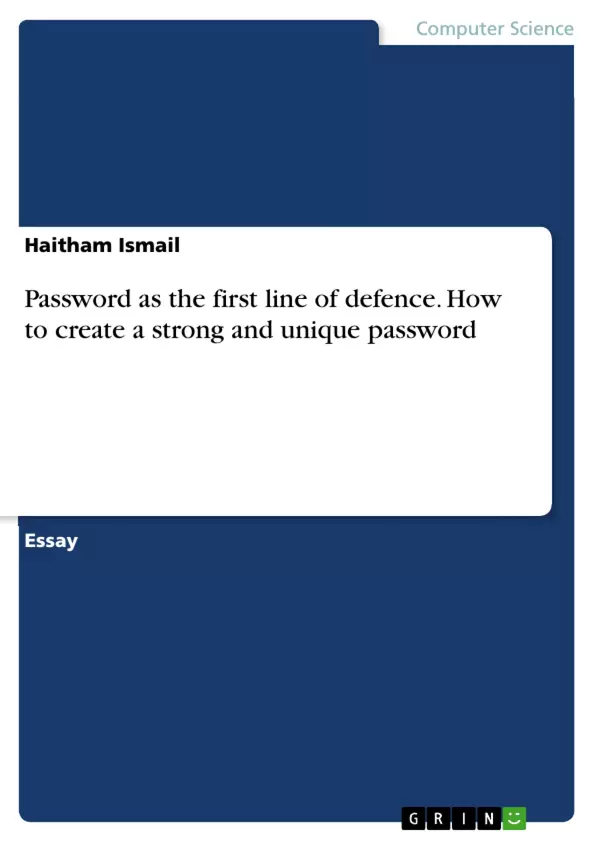Passwords are the first line of defence in any computer systems. Weak passwords or bad habits used when the creation of passwords put sensitive information in danger. In this article, we will discuss the bad habits of password creations, some of the attacks that are used to detect the passwords, identification versus authentication, factors of authentications. Finally, the guidelines used to create a strong unique password are presented.
There are many factors affecting password security apart from creating a complex password. Stanislav (2015) mentioned that passwords can be compromised in many ways. For example, user can be redirected a fake web service to steal your login information. Additionally, key logger is a simple form of malware that can steal sensitive information such as passwords. Not only this but also, brute force attacks can be launched to try a different set of passwords to identify user’s passwords. Password database has protected passwords (e.g. passwords hashes) that can be cracked to obtain passwords information. Moreover, hacker can use social engineering to convince users to share passwords. Finally, Lack of user awareness will make the user carelessly write the passwords on sticky note on his table and anyone can use it.
Inhaltsverzeichnis (Table of Contents)
- Introduction
- Single Password Authentication Risks
- The Five Factors of Authentication.
- Passwords Creation bad habits..
- Password Creation Guidelines..
- Conclusion ..…………….
- Future work..
- Reference
Zielsetzung und Themenschwerpunkte (Objectives and Key Themes)
This article aims to discuss the importance of strong passwords as a first line of defense against cyber threats, highlighting the risks associated with weak passwords and common bad habits. It emphasizes the significance of secure password creation practices, exploring various authentication factors and the need for multifactor authentication.
- Password security and its importance in online activity
- Risks associated with single password authentication
- The five factors of authentication
- Common bad password creation habits and their consequences
- Guidelines for creating strong, unique passwords
Zusammenfassung der Kapitel (Chapter Summaries)
The introduction establishes the vital role of passwords in safeguarding online accounts and discusses the prevalence of password reuse. The article then delves into the risks of using a single password for multiple accounts, outlining various attack methods that exploit password weaknesses. This includes phishing attacks, malware, brute force attacks, hash cracking, and social engineering. The chapter explores different authentication factors, including something you know, something you have, something you are, somewhere you are, and something you do, and introduces multifactor authentication.
The article further examines common bad password creation habits, such as using easily guessable passwords, writing them down, and reusing them across different accounts. It presents a table highlighting the risk levels associated with different password attacks, providing context for understanding the importance of creating strong passwords. Finally, the chapter discusses password guidelines and industry standards to ensure secure password management.
Schlüsselwörter (Keywords)
The key focus of this article revolves around password security, encompassing various aspects of password creation, authentication, and attack methods. Key terms include password, hacking, brute force, single password authentication, two-factor authentication, MFA, and 2FA.
- Quote paper
- Haitham Ismail (Author), 2019, Password as the first line of defence. How to create a strong and unique password, Munich, GRIN Verlag, https://www.hausarbeiten.de/document/506782


